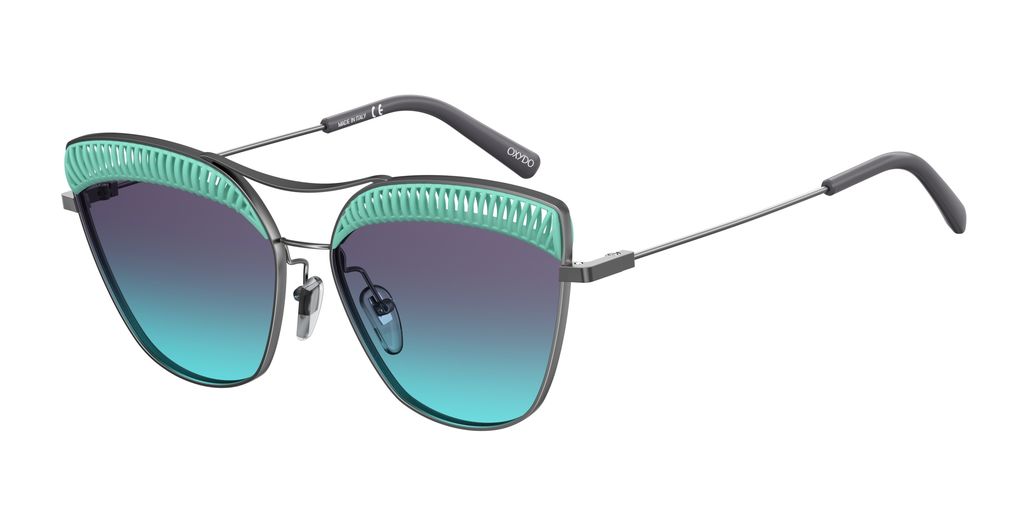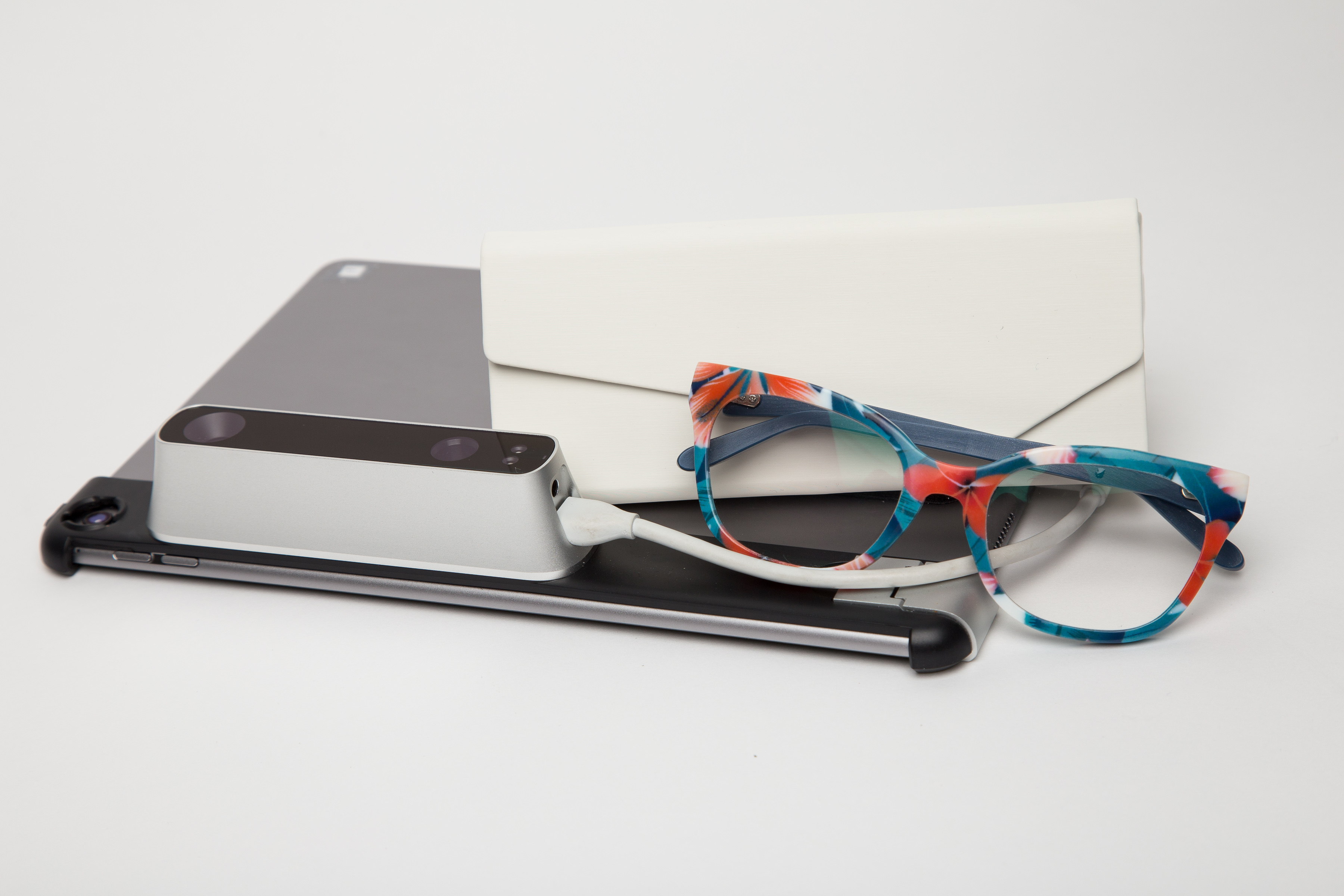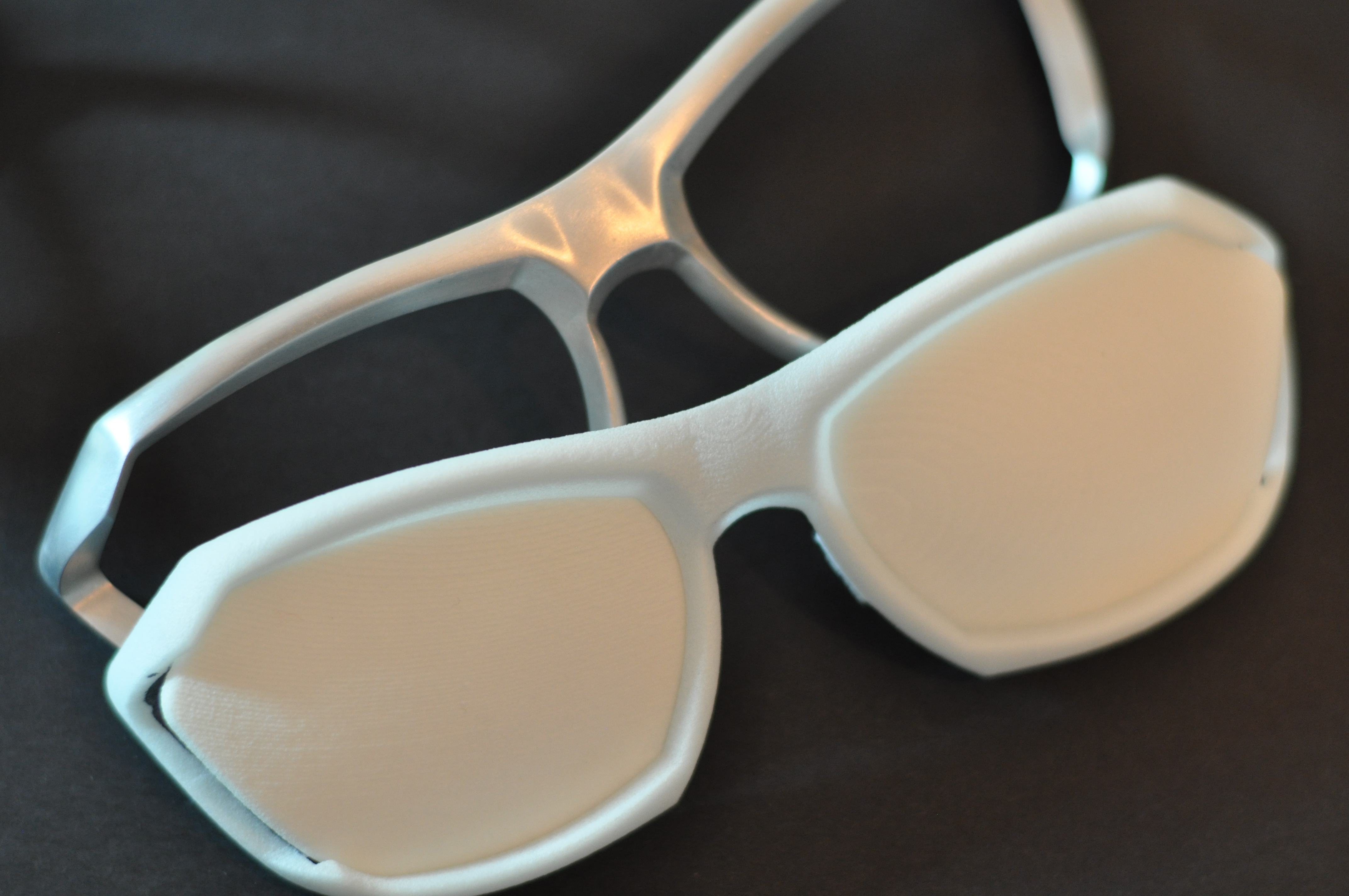Exciting…fun…expensive…not up to snuff…marvelous: descriptors and opinions abound when it comes to 3D printing of eyewear frames.
3D printing is poised to significantly change the traditional manufacturing landscape. It could mean far less outsourcing to other countries as, over time, it becomes cheaper to print frames close to the place where they are ordered. And if 3D printing becomes the predominant method of manufacture, there will be no need for retailers to carry much, if any stock, because frames can be seen on the face via virtual 3D images and custom designed with software at the dispensary. 3D printing of frames has the advantage of generating almost no waste, in contrast to working with sheets of metal or acetate, which does the opposite. In addition, with 3D printing there is no need to over-manufacture products that may not sell because frames can be printed on a just-in-time basis. Finally, mass-customization becomes a reality with 3D printing, presumably making customers happier.
This feature brings you the best of what is currently available in Canada. We cover three manufacturers and four designers, all of whom use 3D printing for all or part of their work. In some cases, 3D printing results in far lower costs, such as when manufacturers use it for almost-instant prototyping; in other cases, the costs can go through the roof, as with 3D printing in titanium. One thing is for sure—this technology stands to shake up the industry big time.
Patrick Hoet, owner and designer for his eponymous brand, Hoet, based in Bruges, Belgium, took a pioneering position with 3D printed frames beginning in 2011. When he couldn’t attract partners he used his own assets to fund research and development, eventually launching the titanium 3D Hoet Couture collection at Silmo 2014. His daughter, Bieke, followed with a polymer 3D collection the following year.
Known for premium-quality artisanal frames, Hoet says that titanium printed in 3D is as good, if not better than traditionally manufactured frames. The polymer (nylon) used in the Cabrio collection has the advantage of being lighter and stronger than acetate, while also withstanding the ageing of acetate caused sweat and chemical agents. “However, colour possibilities and surface quality are somewhat diminished, for the time being,” he notes.
As a designer, Hoet says that 3D printing is “thrilling and challenging: a game changer. It’s like being a kid with his first Lego blocks—it’s not easy to master, but then it wouldn’t be as much fun if it was.”
Hoet helped to develop, and designed the initial frame collection for a 3D printing solution partnership between the Leuven, Belgium firm Materialise and HOYA Vision Care. The Yuniku project, which gives the eyecare professional the opportunity to create custom 3D frames made to order with personalized lenses, is not yet available in North America. He also created a 3D sports eyewear collection for Seiko called Seiko Xchanger.
His experience with 3D printing has made Hoet a big fan of the technology. “Waste is significantly reduced, while creating a product that is completely adapted to the needs of the customer. 3D printing will have a very positive impact on our ecological footprint. I have grandchildren and I want to leave them a better world.”
Sàfilo Group has developed a trend-setting collection, Oxydo Eyewear, in which frames of gold, ruthenium and palladium are enhanced by surrounding, lattice-like architectural structures created with 3D printers. Aesthetics and innovation meet in this striking collection of four styles, entirely Made in Italy. Multi-dimensional and quirky, Oxydo designs are wearable sculptures, one of which was created by New York-based artist Francis Bitonti.
Sàfilo also uses in-house 3D printing to develop prototypes for almost all of its brands. Vladimiro Baldin, chief product design and creation officer, says: “We currently use 3D printing on prototypes. Design ideas are embraced, refined or abandoned based on the look and feel of a prototype. To hasten and sharpen that crucial decision–making, we brought the 3D printing process in–house. Thanks to this, we can produce whole product prototypes in full colour, even with multiple materials, textures and gradients in as little as a few hours, speeding up the process of product development tremendously.”
Baldin sees a bright future for 3D printing: “There are huge opportunities, which consist in constantly refining the materials used, giving rise to products that are unique and tailor-made. And this is key in driving a future of customization. Currently, 3D printing systems are less cost-efficient than traditional mass production techniques, such as metal cutting or plastic injection moulding, but they are set to become better and cheaper over time, radically lowering barriers to entry for start-ups, no matter how small their production runs.”
Oliver Goldsmith, owner and designer of his eponymous London-based company, jumped on the 3D bandwagon with alacrity. “I was very excited by the fact that one can reproduce spectacles that would be impossible by traditional methods,” he says.
Goldsmith worked with Belgium-based 3D printing company, Materialise. “It took over a year to reach the point where I had some production samples in hand, as I had to educate them on the fine points of eyewear design, including six base toric curves for the lenses to fit correctly, getting the bridge fittings to be super-comfortable and joint angles according to the height of the temples being fitted to the fronts.”
Goldsmith and Materialise reproduced four models from Goldsmith’s father’s designs from the 1950s, including SATAN, which he enhanced with a finish that can only be done with 3D printing. The collection is for demonstration purposes only, however, as Goldsmith feels the perceived quality is not yet at the premium eyewear level. “While the actual quality is excellent, 3D printing cannot yet achieve the beautiful colours and colour combinations available in acetate. They are working on water transfer coatings, but this is still in the experimental stages. Also the look and feel in the hand are not the same.”
With the slogan, 20th century design meets 21st century production, Goldsmith’s first 3D collection will be used for window display and publicity purposes. He is hopeful, however, that he can bring a 3D collection to market as materials improve and prices come down.
Specsy is a Toronto-based 3D printing company with a turnkey printing solution for eyecare professionals. Founder and Product Development Manager, Milan Madhavji, a dental radiologist, has been manufacturing high-precision dental products since 2010 for his company, Canaray. He decided to turn his attention to the eyewear industry and launched Specsy in 2017.
Madhavji developed a solution that covers all the bases for ECPs. He explains: “They don’t need a web presence or even a computer or technical know-how to use the Specsy system. We provide what they need to give the customer a customized 3D printed frame, including an iPad equipped with the necessary software, 3D camera, brochures for customers, and a short training manual for opticians that includes information like how to set a lens in a 3D printed frame and how to adjust the shape. Engaging with a customer is as simple as taking her picture, bringing it up on the iPad and helping her select from a variety of frames, which are viewed on her virtual picture. Everything can be done in under five minutes.”
Specsy frames are currently available in a proprietary polymer material. All frames are printed at their Mississauga plant and the turnaround is approximately five days. The company will soon introduce a new printer to create metal frames, as well as software that will allow for increasingly sophisticated customization.
Specsy should be available Canada-wide by March, after which they will launch in the U.S. All manufacturing will remain in Canada, says Madhavji.
WestGroupe, always on the hunt for new processes and technologies that will enhance product and improve service, has been using 3D printing for prototype development since late 2016. Beverly Suliteanu, vice president, product development and creative director, says the learning curve was not without its hiccups: “It took us a bit of time initially to determine the proper setup parameters for metal frames due to the thinness of some of the parts. When separating the 3D frame from the support base, we initially had a lot of breakage by the nose pad guard arm and some of the thin filigree detailing. It was a process of trial and error to determine the proper setup to ensure the 3D prototypes were perfect.”
Due to the fact that there are limitations on the type of colouring and detailing one can have in a 3D printed frame, WestGroupe chose their printer based solely on the need for rapid prototyping. “Knowing that we wanted to better evaluate fit rather than design, we chose a printer that made economic sense for us,” says Suliteanu. “It has offered a great return on investment and most importantly, it has improved the products that we bring to market.”
Rapp Optical designer Shilo Rapp, trained as a goldsmith, loves 3D printing technology. “It has completely transformed the design and fabrication process and I regard it as an extremely useful tool for anyone creating anything, including eyewear,” he says.
Before getting into eyewear design, Rapp freelanced for many jewellers in Toronto, providing them with 3D models for complex custom orders. “While completely eliminating the wax carving and mold maker, these ‘virtual’, though geometrically accurate, computer files would go to 3D printers and eventually become a physical object, ready for metal casting, polish and diamond setting, which is pretty amazing,” he says.
As a designer, Rapp still prefers to transform raw materials manually. “To me it is more fun to use my hands. However, we will continue to employ both the modelling and 3D printing technologies in our design process, prototypes and mechanical fixture making. Our latest collection of combination frames, while not 3D printed, were conceived and designed using 3D modelling software. And, over the years we have utilized the technology in the same way a jeweller would: adding embellished components to our frames, though mostly for one-off pieces.
“As for 3D metal printing, there are some truly amazing examples in the eyewear sector, but for us the technology costs are still high, especially in our preferred material titanium, and would catapult our products into an astronomic price range. When it comes to 3D printed polymers, I have to say that the warmth, along with colour, texture and pattern available in acetate is still unmatched compared to 3D printed frames, though maybe not for long. Whatever happens, we will be ready!”
Colin Redmond, designer for and owner of Niloca Eyewear (see our designer profile of Redmond in the November/December 2017 issue), is an undisputed expert on 3D printing. Educated as an industrial designer, he also has a degree in polymer science. Redmond, based in Melbourne, Australia owned a 3D printing company—Plastic Ink—serving all manner of industries from 2005 – 2010.
Redmond says that while 3D printing technology is getting faster and more reliable, the polymer science is lagging in improving materials. The biggest issue is maintaining climate control, as fluctuations in temperature, humidity, air chemistry, air pressure and even light, affect the printing, forming and fusing of layers.
Producing consistently perfect A-Class surfaces is the big challenge for 3D printing. “The material deficits result in surface finishes that aren’t great. If there is a slight blemish on a large object like a car hood it wouldn’t really show, but on a frame it is obvious. There are tricks to hide the blemishes, but that’s accepting defeat and selling a lesser product. I wouldn’t want to do that to my clientele,” says Redmond.
Despite the challenges, Redmond will release three 3D printed collections in June 2018. Something to look forward to!
As you can see, 3D printing is not yet an unalloyed success or necessarily cost-effective. The promise is great, however, and given the esteem accorded to the professionals covered herein, you can be certain of the best of the best in their 3D printed creations.
By Paddy Kamen













